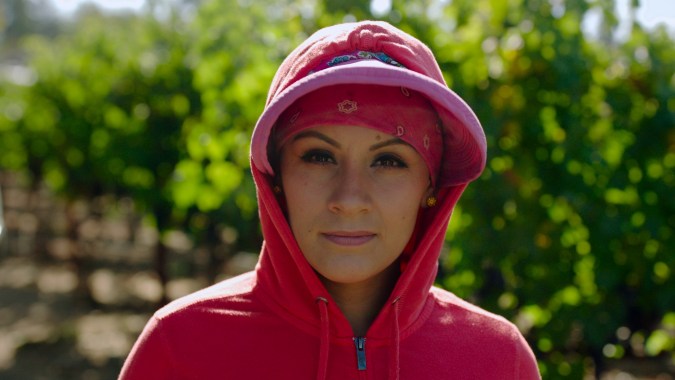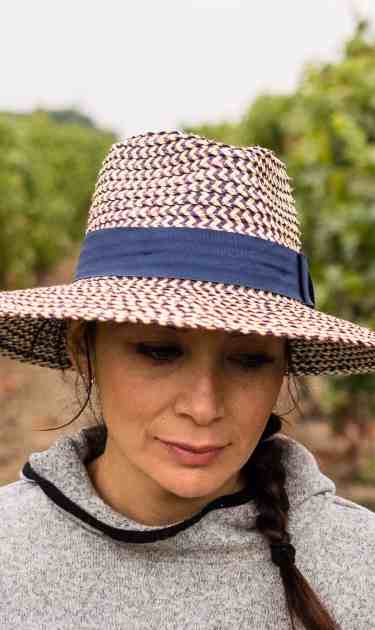Throughout Bernardo Ruiz’s Harvest Season, the Guanajuato-born and Brooklyn-raised filmmaker offers audiences medium shots of the people who populate his documentary. He shows us Gustavo Brambila and Vanessa Robledo standing in front of their respective vineyards. He shows us Rene Reyes, an immigrant worker from Mexico showing his American visa, as well as a series of other unnamed and unidentified laborers who work those very same vineyards. This is a story, he continually reminds us, that focuses on the people behind the wine labels. Chronicling a year — including the titular season — in vineyards and wineries in Napa and Sonoma in California, Ruiz’s documentary puts the stories of Mexican-American winemakers and migrant workers who are essential to the wine business front and center.
Awash with the piercing sunlight of California wine country — full of lush greens and vibrant landscapes — Harvest Season breezily walks us through the world of winemaking. You hear about flavor profiles, yes. But mostly you see the labor-intensive work that goes into making that wine bottle you pick up from the liquor store. Reyes, for example, stands in as a window into the labor shortage that’s affecting the region. Especially as the crackdown on undocumented workers has gone up since the 2016 election. Indeed, the president’s anti-immigrant rhetoric is often right outside the frame. Literally. CNN clips and radio snippets of dialogue are peppered throughout, at the edges of Victor Tadashi Suarez’s lovely natural-lit cinematography.

Those moments when current political debates make their way into the film remind us why the agriculture sector remains ground zero when it comes to any discussions about immigration. As Reyes reminds us, the reason so many farms and vineyards depend on undocumented laborers is because there’s no labor force to pick up the slack. Or, as Angel Calderon, who manages worker housing project the area puts it, there’s no way of talking about wine country without acknowledging Mexican laborers. “Out in the field,” he says, “we see that 90% of workers are Mexicans. I can’t visualize the wealth of Napa Valley without the immigrant workforce. Without them, there’s no economy.” That wealth is what makes the disparity all the more glaring.
Learning about how Calderon and a group of civic-minded locals had to band together to get housing for vineyard laborers is an example of how Harvest Season sheds light on aspects of Napa and Sonoma you wouldn’t otherwise know about. There was a time, Calderon shares, where laborers just slept in churches, under bridges, or nearby rivers. Even so, the housing projects still can’t quite accommodate everyone working the fields. The vastness of the land, which Ruiz shows us in his sweeping montages (set to Alaskan Tapes’ twinkling ambient score), is constantly juxtaposed with the tight-knit communities he’s found in the Valleys.
Brambila and Robledo’s stories present an uplifting example of Mexican-American entrepreneurs continuing family traditions as they work on their wineries. But the documentary is most engaging when following Reyes and Calderon, giving voice to workers whose labor fuels this otherwise luxury economy. Of course, it all comes to a head when the film chronicles the roaring fires that consumed much of the region in 2017. Capturing the panic and the uncertainty of all involved, the natural disaster gives Harvest Season its powerful climax.
The sense of urgency makes its final third quite dramatic. Yet it is Ruiz’s commitment to valuing the interpersonal moments that makes the handsomely-shot Harvest Season worth watching, as a document of timely 2019 issues (immigration, labor rights, climate change) that puts people and communities — not statistics or soundbites — first.
Harvest Season screened as part of the San Diego Film Festival and airs on PBS and PBS.org on May 13, 2019.




